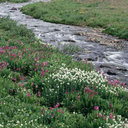Impact of nitroglycerin and glucagon administration on selective common bile duct cannulation and prevention of post-ERCP pancreatitis.
Märksõnad
Abstraktne
OBJECTIVE
Easy common bile duct (CBD) cannulation is associated with low complication rate. This study aimed to investigate the potential impact of nitroglycerin and glucagon administration on selective CBD cannulation and prevention of post-ERCP pancreatitis.
METHODS
A prospective single center, double-blind randomized study in which a total of 455 patients were randomly assigned to CBD cannulation by receiving 6 puffs (2.4 mg) sublingual nitroglycerin and glucagon 1 mg intravenously (n = 227, group A) or 6 puffs sterile water and 20 mg hyoscine-n-butyl bromide intravenously (n = 228, group B). After ERCP, patients were followed for the development of drugs' side-effects and post-ERCP complications.
RESULTS
There were no statistically significant differences between the two groups regarding demographic data and ERCP findings. Success rate of selective CΒD cannulation was 95.15% in group A versus 82.29% in group B (p < .001). Time required for CBD cannulation was 2.82 ± 2.31 min in group A versus 4.27 ± 3.84 min in group B (p = .021). Needle-knife papillotomy was used in 11 (4.85%) patients of group A and 39 (17.11%) patients of group B (p = .001). The frequency of post-ERCP pancreatitis was significantly lower in group A than in group B (3.08% versus 7.46%, p = .037). No difference was observed between the two groups with regard to the occurrence of post-procedure hemorrhage. There was no procedure-related mortality; no adverse event related to the combination regimen was observed.
CONCLUSIONS
Combined nitroglycerin and glucagon administration achieves a high selective CBC cannulation rates with concomitant reduction of post-ERCP pancreatitis incidence. However, further relative large-scale studies are needed to confirm our findings before definite conclusions can be drawn (Clinical trial registration number: NT: 4321).



